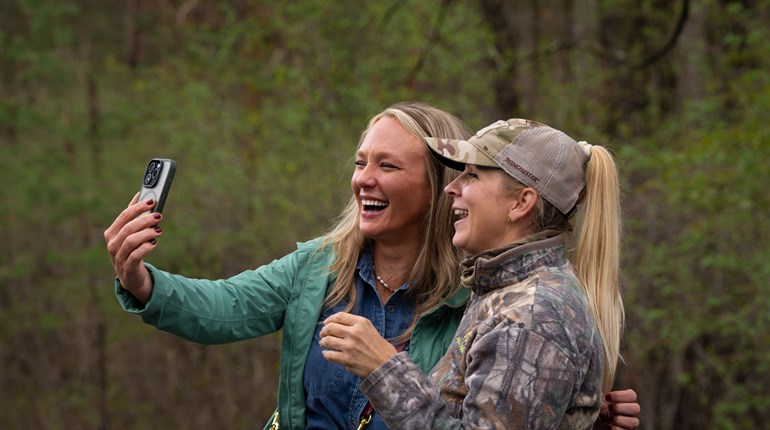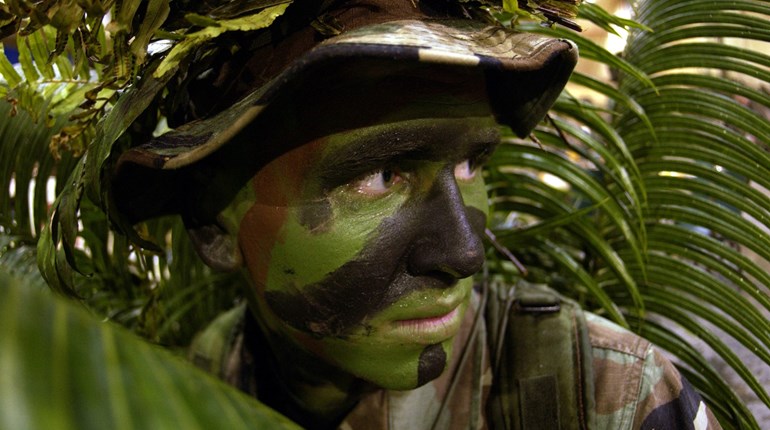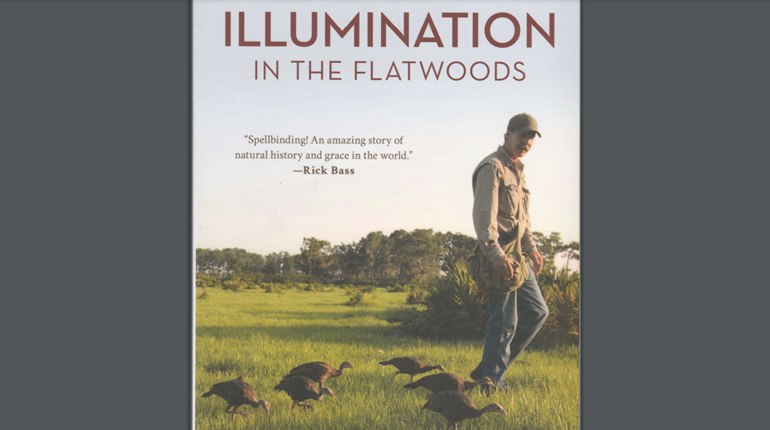My pal J. Guthrie always viewed the world with a uniquely Southern-fried perspective. So when our plan came together to pursue Gould’s turkeys south of the border, well, the text he sent was classic Guthrie: “Oh heck yes, Guthrie and ‘The Steen’ slapping turkeys in Ol’ Mexico. Hot dang.”
It still doesn’t seem possible that it was one of the last messages I ever received from him. My phone rang at an odd hour on the morning of April 13, 2013. It was my friend, Tim Brandt, an employee of Federal Cartridge Company, set to join Guthrie and me in Mexico the following month.
“I wish I was calling with better news,” Tim said, his tone more so than the words causing me to instinctively brace myself. “J. Guthrie died last night.”
One of my great friends—a husband, father and one of the country’s foremost outdoor writers known for his work in this magazine and many others—fell asleep at age 37 and simply never woke up.
■■■
I was no longer excited to hunt Mexico. I didn’t want to go. Guthrie’s loss, I just knew, would envelop the hunt too greatly to bear. How I hoped that Tim would be the first to suggest cancelling to relieve me of the burden. Turns out he had a considerably more positive attitude.
“Tell me a guy who loved to hunt turkeys more than Guthrie,” Tim said. “Would he want us to stay home or go shoot a couple birds? I say we go to Mexico, on the condition Guthrie’s memory accompanies us.”
■■■
May 10, 2013, found me in the back seat of an old Suburban barreling up and down the  rural foothills of the Sierra Madre mountains, the nearest little town being Guerrero in the province of Chihuahua, Mexico. The dust flew, as we were late, and the large rocks scattered across the farm roads—really just horse paths, at best—proved unforgiving.
rural foothills of the Sierra Madre mountains, the nearest little town being Guerrero in the province of Chihuahua, Mexico. The dust flew, as we were late, and the large rocks scattered across the farm roads—really just horse paths, at best—proved unforgiving.
Still, our guide, Damien, attempted conversation as we bounced along. His bosses at El Halcon Outfitters speak perfect English, but he was not blessed with an education. Fortunately, Tim speaks fluent Spanish, and I know enough to sound like Gringo Tarzan.
Somehow the subject of Guthrie came up, though I do not recall exactly how.“He was supposed to join us on this trip,” Tim relayed in Spanish. “But he died four weeks ago.”
“Well,” Damien replied, “I’m sure he’s here with you right now.”
Then a tire exploded. It didn’t just develop a leak—it struck a rock and disintegrated. With neither a spare tire in the vehicle nor time to change one anyhow, we had but one option: Walk up the hill and hunt.
■■■
It was our third day of hard hunting, and I’d spent much time pondering my friend. I remember when I met Guthrie: He strolled into my office to say hello not three hours into my first day on the job at the National Rifle Association. Immediately I knew I was dealing with a human being of unique character and disposition. His Southern drawl was thick, and the further he launched into each story, the thicker it became. He wore a tie—per NRA’s strict dress code—but he also donned a camo hat, a fashion statement no doubt symptomatic of his rebel spirit.
Though the subject of my Yankee ancestry arose early in our conversation, Guthrie invited me to lunch anyhow. The restaurant was a little barbecue joint and, perhaps inspired by my new colleague from Georgia, I ordered the Southern barbecue platter with a sweet potato and sweet tea.
“Why haaaail, Wintersteen, pretty soon we’ll have you pronouncing all four E’s in sh####!t,” he said with his big, good-ol’-boy grin.
I liked “J” immediately, and many of the best stories from my 20s involve him. There are some I can share. Others are fit only for certain audiences. A few remain between Guthrie and me forever. Of the former, I find that I’m most often asked to retell the stories of Guthrie’s workplace pranks.
A personal favorite began at a time when his prowess in this regard was still unbeknownst to me. I walked into his office and spotted an old, obviously reblued 1911 .45 on the desk. I suppose that would be odd in a typical business environment. Guthrie remained engrossed in his work.
Curious, I approached the pistol and did what any safe gun handler would do by pulling back the slide to inspect the chamber. It immediately locked into place and would not return forward despite vigorous effort.
“What the—what are you doing?” exclaimed Guthrie. “That is Joe Foss’ Nineteen-a-freaking-’Leven. You shouldn’t even be handling it without white gloves! My gosh, have you broken it?”
Guthrie escorted me to the media division’s deputy director so I could explain how I’d so defiled the pistol of an American war hero and former NRA president. Unlike Guthrie, she only held her composure a few moments before busting out in laughter. Turns out the 1911 was merely an old gun with a bad spring that would lock into place every time it was pulled back. Guthrie had set a trap for me and executed it perfectly.
Which brings me to Guthrie story No. 2. Once upon a time, J. burst into my bedroom and obtained a semi-nude photo of me, mind you, without my permission. Occasionally I worried about how the photo could come back to haunt me, until one morning Guthrie called to declare that he’d posted it on the office bulletin board.
“Ha-ha. Shut up Guthrie,” I said, hanging up.
Then a steady string of female coworkers called claiming to have seen it. Still, I knew it was a prank. Not even Guthrie would have dared. However, I then received a call from a good church-going coworker named Robert. He didn’t drink. He didn’t cuss. He didn’t lie—except apparently under the charm of one J. Guthrie.
“It’s true,” Robert said. “I can’t believe he’d do that to you.”
I stormed down the hall, furious. I didn’t care if I was fired—I was going to punch Guthrie square on the nose. He saw it in my eyes, too.
“It was a joke! It was a joke!” he wailed, frantically waiving those long, skinny arms. “I didn’t post it, I swear!”
I laughed. He laughed. And, in different ways, we were both relieved.
■■■
The 7,600-foot elevation led Tim and me to gulp air as we climbed while Damien ascended  the ridge so effortlessly he appeared to float. We had reason to hurry, as the sun was already up and at least two gobblers had courteously revealed their roost locations higher on the mountain.
the ridge so effortlessly he appeared to float. We had reason to hurry, as the sun was already up and at least two gobblers had courteously revealed their roost locations higher on the mountain.
But when we reached their suspected arena, all was quiet. We pressed on, reaching a fence. The terrain dropped off sharply beyond it into a small valley. We could hear faint gobbles on the neighboring ridge, but we lacked permission to hunt beyond the barbed wire. It seemed our best shot for the moment, however, so we set up.
There was a sizable mound of earth along the fence so Tim sat to its left and I to its right. If a bird appeared on either side, one of us would have an opportunity to shoot. Damien positioned himself about 20 yards behind us and began yelping on a slate. About every third try, a gobbler answered, but the sound got no closer.
My thoughts drifted to Guthrie. The dry desert air reminded me of the fact he never washed his Jeep, not wanting to “waste water when there’s farmers who can’t irrigate their crops.” Then there was the time I had a flat tire in the NRA parking lot. I looked out an office window and there was Guthrie, beneath my truck in his camo hat and tie changing it for me.
The gobbler fell silent, so we began to get up. Damien gave it one last shot with a box call—and he answered. Damien called again. This time the bird double-gobbled. Then triple-gobbled.
The bird would need to descend into the valley, climb the tall slope in front of us and cross the fence, but it was fired up. And it was coming. I caught a glimpse of it through my binocular on its way down the ridge, and the next time we heard it the distance was cut substantially—the bird was likely already on the near slope approaching the fence.
The gobbler roared. Was this really happening? It now sounded as if in range, though still out of sight and on the wrong side of the fence. I positioned my shotgun, ready if necessary to take a quick poke.
The bird was spitting and drumming between gobbles. It moved to Tim’s side of the mound and for the first time I saw its white, spongy head emerge over the brush. Just as quickly it ducked back below the slope and walked toward my side of the mound. And so it continued. The bird went to Tim’s side, then back to me, then to Tim again. We made eye contact and I wiggled my trigger finger: “Shoot it, Tim.”
But Tim could see that the bird still had not crossed the fence. It turned back to me once again. The bird’s gobbles seemed faster, more strained—frustration?
Damien watched the bird swing around my side of the mound, press its breast low to the sand and slide under the fence. The bird emerged at 20 yards with its fan spread wide, but it quickly broke strut. Did it see us? Too late: A Federal FliteControl wad delivered 1¼ ounces of No. 5 Heavyweight shot to its noggin. The 2¾-inch shell produced little recoil, affording me the opportunity to witness the bird’s feet flop into the air as it reverse somersaulted, stone dead.
■■■
I carried the bird back to our disabled Suburban, which the sun revealed to be in a  beautiful location, a stand of pines providing shade along a swiftly flowing creek. Ranch hands arrived on horseback with a spare tire and were busy changing it. Lunches were dispersed.
beautiful location, a stand of pines providing shade along a swiftly flowing creek. Ranch hands arrived on horseback with a spare tire and were busy changing it. Lunches were dispersed.
And, as we sat there eating our sandwiches—ham with a creamy, cheddar-like el piño cheese on locally baked bread—I reflected upon the morning’s events: Damien’s insistence that Guthrie was with us; the tire exploding mid-conversation, stranding us in a location we never intended to hunt; and shooting a bird in dramatic fashion within 60 minutes. Some might think what occurred was a coincidence, but I feel in my heart that an old friend orchestrated the whole thing: Guthrie and “The Steen” slapped a turkey in Ol’ Mexico.




































